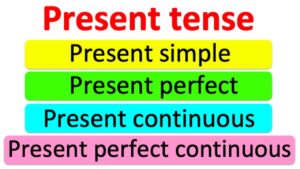Present and Present is a word that carries a fascinating duality in the English language, as it can be both a noun and a verb, each with distinct meanings and applications. This dual nature of “present” makes it a noteworthy word in the lexicon, serving as a perfect example of how language can convey complex ideas through simple linguistic tools.
As a noun, “present” refers to a tangible item or gift that is given to someone on a special occasion, such as a birthday or holiday. These physical tokens of affection or celebration often hold sentimental value and are exchanged to express goodwill, love, or appreciation. The act of exchanging presents is a time-honored tradition in many cultures, embodying the joy of giving and receiving.
As a verb, “present” takes on a different role, signifying the act of offering or displaying something in the here and now. Whether it’s presenting information during a lecture, presenting oneself in a social setting, or presenting evidence in a court of law, the verb form of “present” is a fundamental part of effective communication and interaction.
This juxtaposition of “present” as a noun and a verb showcases the richness and versatility of the English language, where a single word can encompass both the act of giving a gift and the act of conveying information or oneself. In this introduction, we’ll explore the diverse facets of “present” and how they play a crucial role in our lives and language.
Common confusion between “present” and “present

The common confusion between “present” and “present” arises due to their identical spelling but different meanings and usage.
As a noun, “present” refers to a tangible item or gift given to someone, especially on a special occasion. For instance, a birthday present or a holiday present.
As a verb, “present” means to offer or display something in the current moment. This could involve presenting information during a meeting, presenting oneself in a social setting, or presenting evidence in a court of law.
Because both the noun and the verb forms of “present” are spelled the same way, it’s easy to mix them up, especially in writing. It’s important to pay close attention to the context in which the word is used to determine whether it’s referring to a gift or the act of offering or displaying something. This distinction is crucial for clear and effective communication.
Usage of “Present” (Noun)
The word “present” as a noun has a few different uses and meanings:
- A gift or something given: This is the most common usage. A “present” refers to an item given to someone, typically on a special occasion or as a gesture of goodwill. It’s often wrapped or packaged. For example, “I received many presents on my birthday,” or “She gave me a beautiful present.”
- The current time or moment: “Present” can be used as a noun to refer to the current time or moment. In this context, it’s often used in phrases like “at present” or “in the present,” which mean “right now” or “at this moment.” For example, “At present, I am too busy to talk,” or “In the present, we are focusing on our research.”
- In grammar and linguistics: “Present” can also refer to the grammatical tense used to describe actions happening now, such as in the sentence, “I am reading a book,” where “am reading” is in the present tense.
These are the primary uses of “present” as a noun. The context in which it is used will determine its specific meaning.
Usage of “Present” (Adjective)
The word “present” can also function as an adjective, and it typically means being in a particular place or situation. Here are some common ways “present” is used as an adjective:
- Being in a specific place:
-
- “All the students are present in the classroom.” (meaning they are physically there)
- “Is the CEO present at the meeting?” (asking if the CEO is in attendance)
- Existing or occurring now:
-
- “The present moment is all we have.” (referring to the current time)
- “I’m focused on the present task, not the future ones.” (referring to the current task)
- Existing in a particular location or situation:
-
- “She is present in the city for a conference.” (referring to her being in the city for a specific purpose)
- “He was present during the entire event.” (meaning he was there for the entire event)
- Not absent or away:
-
- “Is everyone present and accounted for?” (asking if everyone is here and none are missing)
Remember, context is crucial in determining the meaning of “present” as it can be used as a noun, adjective, or even a verb, and the intended meaning will vary accordingly.
Usage of “Present” (Verb)
The word “present” can also function as a verb, and it has several different meanings and usages:
- To offer, give, or provide: When used as a verb, “present” means to offer, give, or provide something to someone. This can be a gift, information, an opportunity, or even oneself. For example:
-
- “She presented a beautiful bouquet of flowers to her friend.”
- “The CEO will present the company’s financial report during the meeting.”
- “I would like to present myself as a candidate for this position.”
- To introduce or show: “Present” can also mean to introduce or show something to an audience, often in a formal or official manner:
-
- “The host will present the award to the winner.”
- “The professor presented her research findings at the conference.”
- To display or exhibit: In some contexts, “present” can mean to display or exhibit something for others to see:
-
- “The museum is presenting a new art exhibit.”
- “The artist will present her work at the gallery next week.”
- To bring to someone’s attention: “Present” can be used to bring a matter or issue to someone’s attention, often in a formal or official capacity:
-
- “I need to present this problem to the board of directors.”
- “Please present your proposal at the committee meeting.”
- To be in a particular state or condition: In some cases, “present” can be used to describe being in a specific state or condition, often in legal or formal language:
-
- “The evidence presented itself clearly in court.”
- “The case presents a unique challenge for the investigators.”
The meaning of “present” as a verb varies depending on the context, and it can encompass actions related to giving, showing, introducing, or bringing to attention.
Tips for Remembering the Differences between present and present
Remembering the differences between “present” and “present” can be challenging because they are homophones (words that sound the same but have different meanings).
To help you remember, consider the following tips:
- Visualize the context: When you come across a sentence with “present” or “present,” try to visualize the context. Is it related to gifts, time, or something else? This can give you a clue about which word to use.
- Use mnemonic devices: Create a mental image or phrase to associate with each word. For example, you can think of “present” (the gift) as something you “see” because it’s a tangible item, and “present” (the time) as something that is happening “now.”
- Practice with sentences: Write sentences or phrases that use “present” and “present” correctly. The more you practice, the more comfortable you will become with using these words.
- Proofread and check: Always proofread your writing and check for the correct usage of “present” and “present.” If you’re unsure, take a moment to verify which word is appropriate in the given context.
- Create flashcards: Make flashcards with one side showing a sentence or phrase using “present” or “present” and the other side revealing the correct word and its meaning. Quiz yourself regularly to reinforce your memory.
- Read and listen: Exposure to correctly used words in context can reinforce your understanding. Read books, articles, and listen to well-spoken English to see and hear how these words are used.
- Ask for feedback: If you’re still uncertain, ask a friend, teacher, or language partner to review your writing and provide feedback on the correct usage of “present” and “present.”
- Use dictionaries and language resources: Online dictionaries and language resources often provide detailed explanations and examples of word usage. Use these references when in doubt.
- Stay patient: Learning homophones can be tricky, but with practice and patience, you’ll become more confident in distinguishing between “present” and “present.”
By applying these tips and consistently practicing, you can enhance your ability to remember the differences between “present” as a noun (referring to gifts or time) and “present” as a verb (referring to giving or showing).
When to Use “Present” and “Present” in Writing and Sentences

Knowing when to use “present” and “present” in writing and sentences is essential for clear communication. Here are guidelines for each form:
Present as a Noun (Referring to a Gift or the Current Time):
- Present as a gift: Use “present” when referring to a gift or something given to someone, typically on a special occasion or as a token of goodwill.
-
- Example: “She received a beautiful present on her birthday.”
- Present as the current time or moment: Use “present” when you want to indicate the current time or moment, often in phrases like “at present” or “in the present.”
-
- Examples:
-
-
- “At present, I’m unavailable for a meeting.”
- “In the present, our focus is on research and development.”
-
Present as a Verb (Indicating Giving or Showing):
- Present as an action: Use “present” when you want to convey the act of giving, offering, showing, or introducing something.
-
- Examples:
-
-
- “I will present my findings at the conference.”
- “He presented a bouquet of flowers to his partner.”
-
Tips for Avoiding Ambiguity:
- Proofread: Always proofread your writing to ensure you’ve used the correct form of “present” based on the intended meaning.
- Context Matters: Consider the context and the role of “present” or “present” in the sentence. Is it describing a gift, indicating the current time, or denoting an action?
- Homophones: Be aware that “present” and “present” are homophones, meaning they sound the same but have different meanings. This similarity can lead to confusion, so extra attention is necessary.
- Rephrase When in Doubt: If you’re unsure about which form to use and suspect potential ambiguity, consider rephrasing the sentence to make the meaning clearer.
By following these guidelines and staying vigilant about context, you can choose the appropriate form of “present” or “present” in your writing, reducing the likelihood of ambiguity and ensuring your message is effectively communicated.
Conclusion
Understanding the distinctions between “present” and “present” is crucial for clear and effective communication in writing and speech. Whether you are referring to a gift or the current time using “present” as a noun, or indicating an action of giving or showing with “present” as a verb, context plays a pivotal role.
Avoiding ambiguity in sentences involving these homophones is possible through careful consideration of the intended meaning, proofreading, and rephrasing when necessary. By mastering the usage of present and present, you can enhance the clarity and precision of your language, ultimately improving the impact of your communication.

